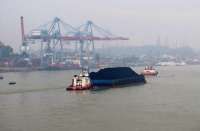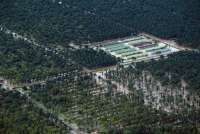CHINA - SINGAPORE/NEW DELHI. In the days leading up to the most violent border clash between India and China in decades, China brought in pieces of machinery, cut a trail into a Himalayan mountainside and may have even dammed a river, satellite pictures suggest.
The images, shot on Tuesday, a day after soldiers engaged in hand-to-hand combat in the freezing Galwan Valley, show an increase in activity from a week earlier.
India said 20 soldiers were killed in a premeditated attack by Chinese troops on Monday night at a time when top commanders had agreed to defuse tensions on the Line of Actual Control (LAC), or the disputed and poorly defined border between the nuclear-armed neighbours.
China rejected the allegations and blamed frontline Indian soldiers for provoking the conflict which took place at the freezing height of 14,000 feet (4,300 metres) in the western Himalayas.
The 4,056-km (2,520-mile) border between India and China runs through glaciers, snow deserts and rivers in the west to thickly forested mountains in the east.
The Galwan Valley is an arid, inhospitable area, where some soldiers are deployed on steep ridges. It is considered important because it leads to the Aksai Chin, a disputed plateau claimed by India but controlled by China.
The satellite pictures, taken by Earth-imaging company Planet Labs and obtained by Reuters, show signs of altering the landscape of the valley through widening tracks, moving earth and making river crossings, one expert said.
The images shows machinery along the bald mountains and in the Galwan River.
"Looking at it in Planet, it looks like China is constructing roads in the valley and possibly damming the river," Jeffrey Lewis, director of the East Asia Nonproliferation Program at California’s Middlebury Institute of International Studies.
"There are a ton of vehicles on both sides (of the LAC) - although there appear to be vastly more on the Chinese side. I count 30-40 Indian vehicles and well over 100 vehicles on the Chinese side."
/2020/06/17/1714718823p.jpg)









